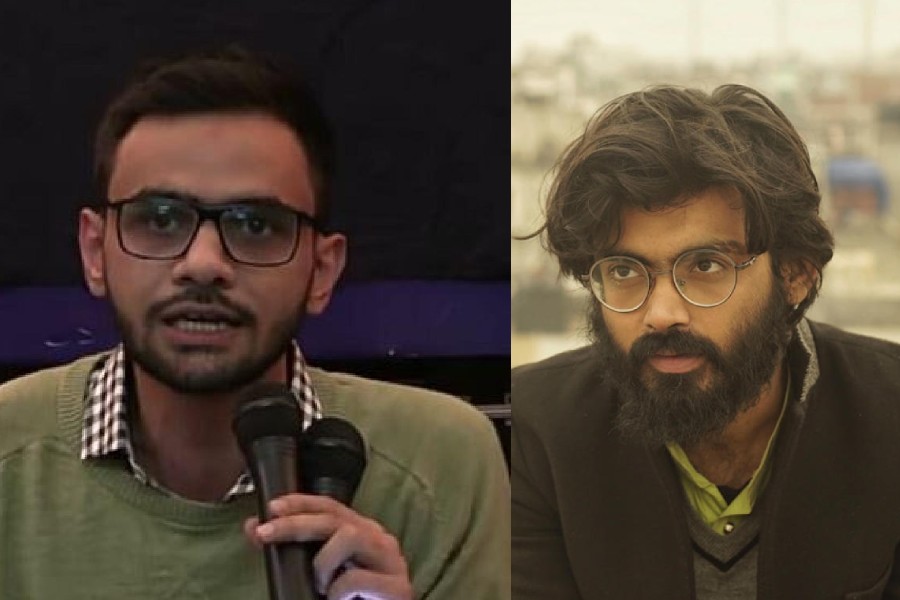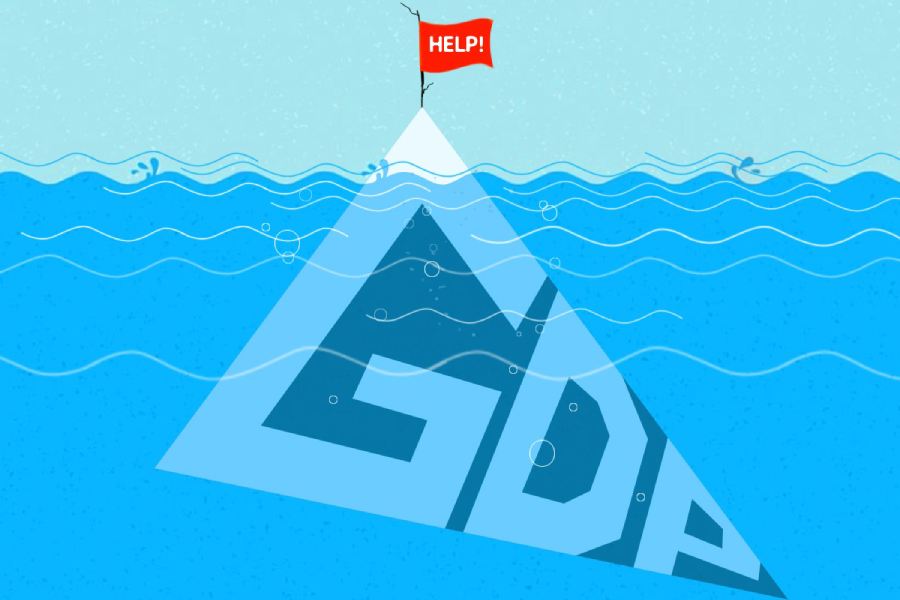Eddie Van Halen, whose razzle-dazzle guitar-playing — combining complex harmonics, innovative fingerings and ingenious devices he patented for his instrument — made him the most influential guitarist of his generation and his band, Van Halen, one of the most popular rock acts of all time, died on Tuesday. He was 65.
Van Halen’s son, Wolfgang, said in a statement that his father had “lost his long and arduous battle with cancer.” The statement did not say where he died.
Van Halen structured his solos the way Macy’s choreographs its Independence Day fireworks shows: shooting off rockets of sound that seemed to explode in a shower of light and color. His outpouring of riffs, runs and solos was hyperactive and athletic, joyous and wry, making deeper or darker emotions feel irrelevant.
“Eddie put the smile back in rock guitar at a time when it was all getting a bit broody,” his fellow guitar ace Joe Satriani told Billboard magazine in 2015. “He also scared the hell out of a million guitarists because he was so damn good.”
Van Halen was most widely revered by his peers for perfecting the technique of two-handed tapping on the guitar neck. That approach allowed him to add new textures, and percussive possibilities, to his instrument, while also making its six strings sound as expressive as a piano’s 88 keys or as changeable as a synthesizer. He received patents for three guitar devices he had created. In 2012, Guitar World Magazine ranked him No. 1 on its list of the “100 Greatest Guitarists of All Time.”
“I’m always pushing things past where they’re supposed to be,” Van Halen told the educational website Zocalo Public Square in 2015. “When ‘Spinal Tap’ was going to 11, I was going to 15,” he said — a reference to that film’s famous joke about a guitarist who dubiously claims that his amplifier can exceed its highest decibel level.
The zest in Van Halen’s playing paired perfectly with the hedonistic songs and persona of his hard-rocking band, Van Halen, whose original lineup featured his brother Alex on pummelling drums, Michael Anthony on thunderous bass and singer David Lee Roth, who presented a scene-stealing mix of Lothario, peacock and clown.
Formed in 1972, Van Halen went on to sell more than 56 million albums in the United States alone. Ten of the band’s studio albums (some of which were cut with Sammy Hagar as lead singer during a long split with Roth) went multi-platinum. One sold more than 6 million copies (“5150” in 1986, featuring Hagar); another sold 5 million (“Van Halen II” in 1979); and two passed the 10 million mark to achieve “diamond” status (the band’s debut, “Van Halen,” in 1978, and “1984,” issued the year in the title).
Eleven of the band’s studio albums reached the Top 5, and four snagged the top spot on Billboard’s Top 200. Van Halen amassed eight Billboard Top 20 singles, including a cover of Roy Orbison’s “(Oh) Pretty Woman,” which reached No. 12 in 1982, and “Jump,” which seized the No. 1 spot in 1984 and held it for five weeks. In 2007, the band — including both Roth and Hagar — was inducted into the Rock & Roll Hall of Fame.
Edward Lodewijk Van Halen was born on Jan. 26, 1955, in Amsterdam to Jan and Eugenia (Beers) Van Halen. His father, a struggling Dutch classical musician who played clarinet, saxophone and piano, met his Indonesian-born wife while on tour in Indonesia.
In 1962, when Van Halen was 7, his family relocated to the United States, driven away by prejudice against his mother and unfavorable work opportunities in the Netherlands. They settled in Pasadena, California. His mother worked as a maid, his father as a janitor while seeking work as a musician.
In a new country, with a new language to learn, the Van Halen sons, Eddie and his older brother, Alex, turned to music as their lingua franca. Eddie first studied classical piano, which he excelled at despite a serious limitation. “I never learned how to read music,” he told Rolling Stone in 1995. “I fooled my teacher for six years. He never knew. I’d watch his fingers, and I’d play it.”

Valen's outpouring of riffs, runs and solos was hyperactive and athletic, joyous and wry, making deeper or darker emotions feel irrelevant Twitter/@eddievanhalen
Inspired by the British group the Dave Clark Five, Van Halen and his brother began playing rock ’n’ roll, with Eddie on drums and Alex on guitar. They switched instruments once Eddie discovered that his brother had a better feel for percussion.
The siblings formed their first band in 1964, the Broken Combs, which became the Trojan Rubber Company. In 1972 they formed a new group, calling themselves Genesis, even though there was already a British band by that name. They rented a sound system from Roth, whom they eventually hired as their singer — but only, Eddie Van Halen later said, to save the rental money. Two years later, they recruited Michael Anthony on bass and changed their name first to Mammoth and then to Van Halen.
Van Halen recorded its debut album for the label in just three weeks, employing few overdubs, the better to capture its in-concert brio. Released in early 1978, the album broke the Billboard Top 20 and, in the process, reasserted the power of hard rock at a time when disco, punk and new wave dominated.
Just as important, the album alerted the world to a new kind of guitar hero, one who ignored the blues-rock roots of the previous generation of guitar gods, like Jeff Beck, Jimmy Page and Eric Clapton, to grow what sounded like roots of its own. In the studio as onstage, Eddie Van Halen could make the guitar sound like a divebombing plane one moment and a pack of wild hyenas the next.
His showstopping solo piece from the album, “Eruption,” showcased his finger-tapping technique, which set a new bar for guitar pyrotechnics. While other guitarists — notably Allan Holdsworth, a major influence — had used this approach before, Van Halen had noticed that “nobody was going more than just one stretch and one note, real quick,” he said in a 1979 interview that was published 20 years later in Classic Rock magazine. “I hadn’t really seen anyone get into it as far as they could.”
But by the band’s “1984” album, it had pulled a switch, augmenting its sound with keyboards played by Eddie Van Halen. That slicker approach helped make “1984” the band’s top-selling album and turned “Jump” into its sole chart-topping song.
Van Halen raised his own profile that year with a guest appearance on Michael Jackson’s megahit “Beat It,” for which he not only contributed a star turn of a solo but also rearranged the song. And that new presence in the spotlight only further fanned long-smouldering personal and creative conflicts with Roth, causing the singer to leave the band that year for a solo career.
His replacement, Hagar, had released a string of successful solo albums. While hard-core fans missed the original lineup, Van Halen’s debut release with Hagar, “5150,” gave the group its first No. 1 Billboard album, and its single, “Why Can’t This Be Love,” reached No. 3. The band’s next three albums, all fronted by Hagar, also topped the charts, while the concert set “Live: Right Here, Right Now” climbed to No. 5.
Still, tensions developed between Eddie Van Halen and Hagar, causing the singer to leave the band in 1996. A subsequent proposed reunion with Roth fell apart over the usual arguments. “I don’t think the guy was ever real,” Van Halen said of Roth to Rolling Stone. “I never felt any connection.”
For the band’s third frontman, Van Halen hired Gary Cherone, formerly of the metal band Extreme. And while the lone album with him, “Van Halen III,” broke the Top 5 in 1998, it didn’t sell as well as earlier efforts and received withering reviews.
A dark period followed for Eddie Van Halen, during which, as he later admitted, his drinking and drug use increased. He separated from his wife, actress Valerie Bertinelli, whom he had married in 1981 (they divorced in 2007), and the band lost its contract with Warner Bros. He also had to have hip replacement surgery in 1999 and, the next year, underwent treatment for tongue cancer. In 2002, he was declared cancer-free after having had one third of his tongue removed.
Two years later, the band reunited with Hagar for a successful compilation album and tour, though Eddie Van Halen’s drinking again spiked, causing problems that led Hagar to leave the band for a second time. After much speculation, Van Halen finally reunited with Roth for a tour in 2007, by which time the band had fired Anthony, whose talents Eddie Van Halen had long questioned. The replacement on bass was Eddie’s 17-year-old son, Wolfgang.
In addition to his son and his brother, Van Halen is survived by his wife, Janie Liszewski, whom he married in 2009.
In his 1979 interview, Van Halen clarified his guiding principle for the band. “All we’re trying to do is put excitement back into rock ’n’ roll,” he said. “A lot of people seem like they forgot what rock ’n’ roll is about. We’re very energetic. We get up there and blaze.”
New York Times News Service











